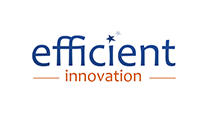H2020 EDDA is one of the project of the Strategic Research Cluster (SRC) on “In-Space electrical propulsion and station keeping” (http://epic-src.eu/) and also a continuation of H2020 HV-EPSA (grant 687515, http://hv-epsa-h2020.eu/) which allowed to work on high voltage bus, from 300V to 600V, mandatory for direct-drive architecture.
H2020 CHEOPS (also, https://www.cheops-h2020.eu/) is developing Electrical Propulsion Subsystem for various power range missions, including a high-power Hall Effect Thruster (HET) of 20kW. A dedicated assessment is done for a direct-drive architecture for a specific HET called HT20k.
Hall Effect Thruster, as well as HEMP Thruster (in H2020 HEMPT-NG, part of theSRC, https://www.hempt-ng.eu/) has a voltage range compatible to the high voltage bus studied in HV-EPSA H2020 EDDA will enable a transversal architecture compatible with various electric thrusters available on the market, allowing to enhance the global efficiency from solar array to thruster
Numerous missions will benefit
of this architecture:
Large telecom satellite with electric propulsion for orbit raising
In-orbit service mission
Interplanetary transportation
European Direct-Drive Architecture
EDDA
Consortium




 The project has received funding from the European Union’s Horizon 2020 Research and Innovation Programme under Grant Agreement Nº 870470
The project has received funding from the European Union’s Horizon 2020 Research and Innovation Programme under Grant Agreement Nº 870470

